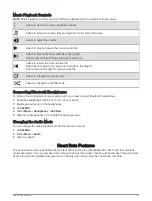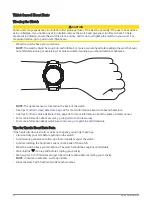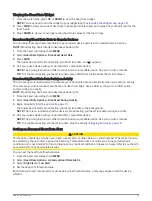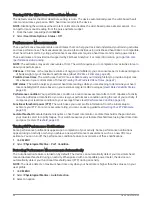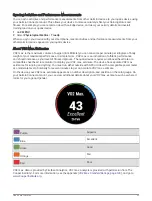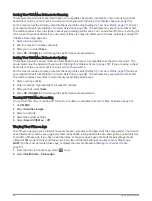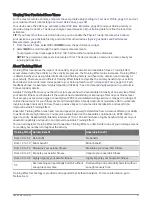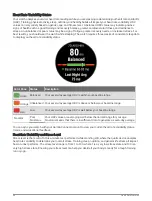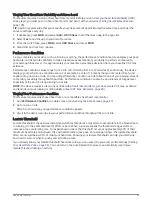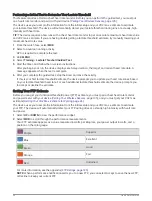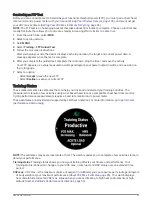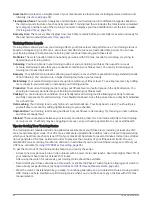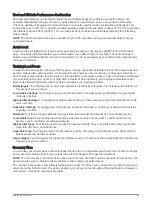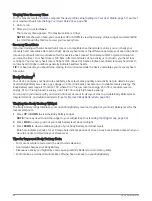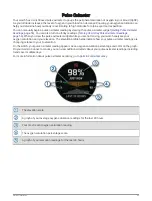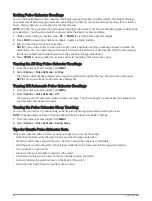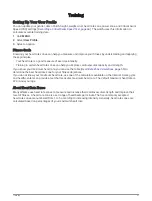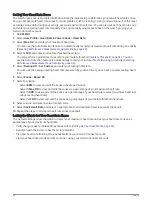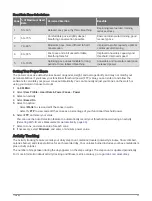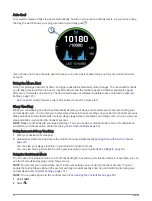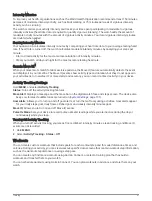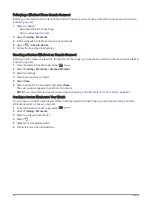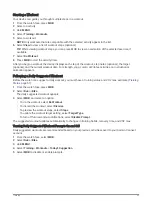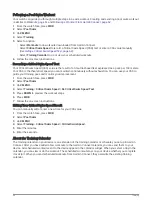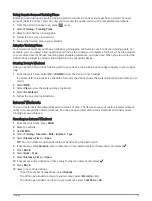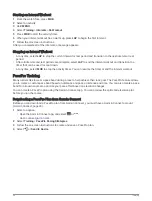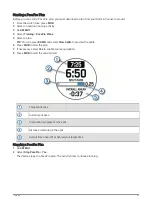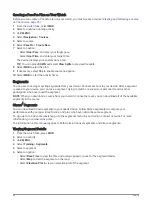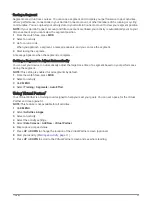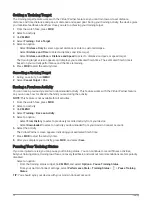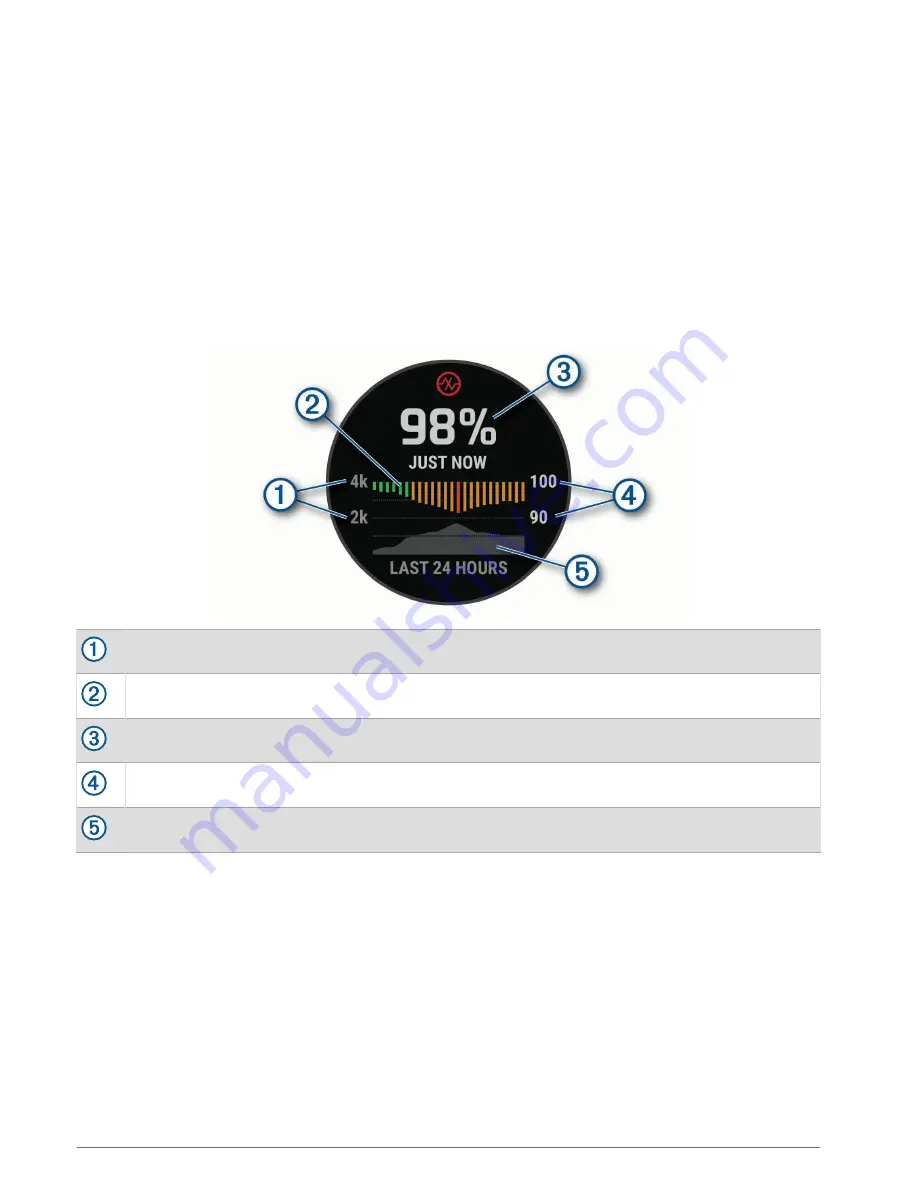
Pulse Oximeter
Your watch has a wrist-based pulse oximeter to gauge the peripheral saturation of oxygen in your blood (SpO2).
As your altitude increases, the level of oxygen in your blood can decrease. Knowing your oxygen saturation can
help you determine how your body is acclimating to high altitudes for alpine sport and expedition.
You can manually begin a pulse oximeter reading by viewing the pulse oximeter widget (
). You can also turn on all-day readings (
Turning On All-Day Pulse Oximeter Readings,
). When you view the pulse oximeter widget while you are not moving, your watch analyzes your
oxygen saturation and your elevation. The elevation profile helps indicate how your pulse oximeter readings are
changing, relative to your to elevation.
On the watch, your pulse oximeter reading appears as an oxygen saturation percentage and color on the graph.
On your Garmin Connect account, you can view additional details about your pulse oximeter readings, including
trends over multiple days.
For more information about pulse oximeter accuracy, go to
.
The elevation scale.
A graph of your average oxygen saturation readings for the last 24 hours.
Your most recent oxygen saturation reading.
The oxygen saturation percentage scale.
A graph of your elevation readings for the last 24 hours.
Pulse Oximeter
55
Summary of Contents for QUATIX 6
Page 1: ...QUATIX 6 Owner sManual ...
Page 137: ......
Page 138: ...support garmin com GUID 3D8FCD7B 7C56 43A9 8665 5CDE4FFD7DF3 v4 August 2022 ...

